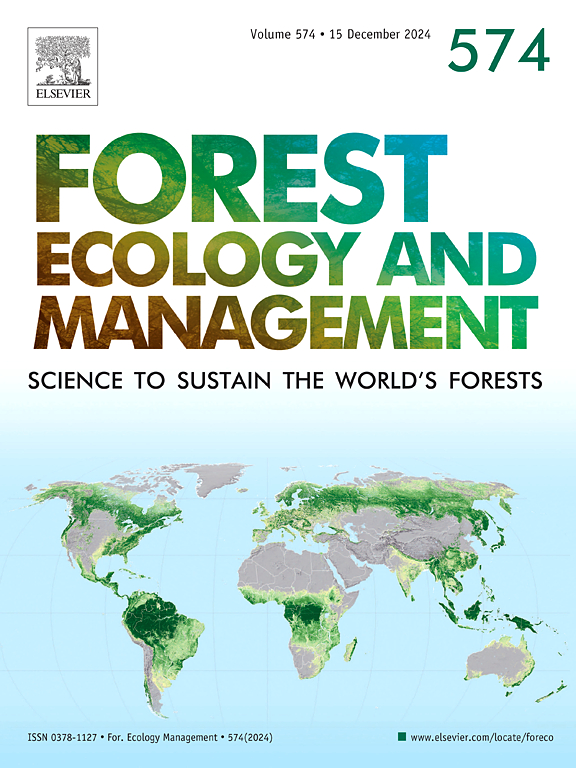Effects of herbivory on shrub performance in a managed forest
IF 3.7
2区 农林科学
Q1 FORESTRY
引用次数: 0
Abstract
Large herbivores have an outsized influence on ecosystem structure and function but are declining globally. In managed forests, shrub planting is commonly used to improve habitat for large herbivores, but success of this approach has been mixed. Despite the time and cost involved, planting efforts often fail to establish viable shrub communities, underscoring the need to understand factors that govern interactions between large herbivores and planted shrubs. We evaluated whether and to what degree herbivory during winter limited performance of planted shrubs in a forest managed as winter range for North American elk (Cervus canadensis). Using long-term herbivory exclosures (n = 5) and a before-after-control-impact design, we assessed (1) the nature and magnitude of shrub responses to winter herbivory during the subsequent growing season, and (2) relationships between shrub size (i.e., height, volume) and ability to replace biomass lost to herbivores during winter. Consistent with herbivore optimization theory, shrubs responded positively to winter browsing by producing longer shoots and concomitantly more biomass during the subsequent growing season. However, this response was contingent on shrubs surpassing mean minimum size thresholds prior to being exposed to herbivory. These results indicate that identifying such thresholds and allowing planted shrubs to reach them before being exposed to herbivory could help improve the effectiveness of habitat management for large herbivores. For example, the use of low-cost fencing to temporarily protect young shrubs from browsing, or the planting of older, larger shrubs could lead to more consistent success in establishing viable shrub communities in managed forests.
求助全文
约1分钟内获得全文
求助全文
来源期刊

Forest Ecology and Management
农林科学-林学
CiteScore
7.50
自引率
10.80%
发文量
665
审稿时长
39 days
期刊介绍:
Forest Ecology and Management publishes scientific articles linking forest ecology with forest management, focusing on the application of biological, ecological and social knowledge to the management and conservation of plantations and natural forests. The scope of the journal includes all forest ecosystems of the world.
A peer-review process ensures the quality and international interest of the manuscripts accepted for publication. The journal encourages communication between scientists in disparate fields who share a common interest in ecology and forest management, bridging the gap between research workers and forest managers.
We encourage submission of papers that will have the strongest interest and value to the Journal''s international readership. Some key features of papers with strong interest include:
1. Clear connections between the ecology and management of forests;
2. Novel ideas or approaches to important challenges in forest ecology and management;
3. Studies that address a population of interest beyond the scale of single research sites, Three key points in the design of forest experiments, Forest Ecology and Management 255 (2008) 2022-2023);
4. Review Articles on timely, important topics. Authors are welcome to contact one of the editors to discuss the suitability of a potential review manuscript.
The Journal encourages proposals for special issues examining important areas of forest ecology and management. Potential guest editors should contact any of the Editors to begin discussions about topics, potential papers, and other details.
 求助内容:
求助内容: 应助结果提醒方式:
应助结果提醒方式:


